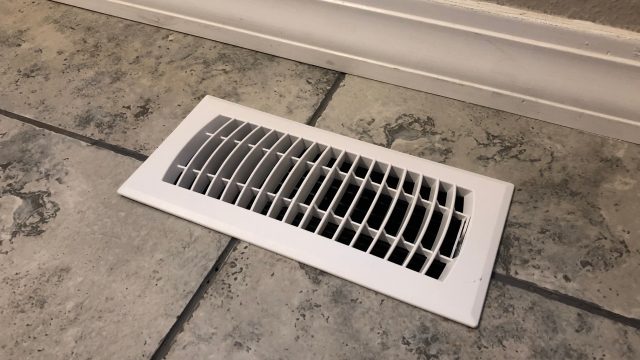By Kristin Case, PE
Not long ago I found some rust spots on the floor register in our guest bathroom. I picked up a new 4” x 10” white, resin floor register the next time I was at a home improvement store.
Anyway, if you’ve never replaced a floor register, it is one of the few home improvement projects that could safely be delegated to a six-year-old. As I didn’t have a six-year-old handy, I set aside 15 seconds to do it myself. For the uninitiated, replacement involves two steps: (One) lifting the old register out of a rectangular hole in the floor and (two) inserting the new register in the existing rectangular hole. (FYI a wall register often involves two screws and should probably be delegated to an eight-year-old.)
I’d removed the rusting register and was about to rip into the packaging (a little cardboard and clear wrapping paper) of the new one when I noticed there were work instructions printed on the wrapping paper. As someone who reads a lot of work instructions professionally, my interest was piqued. There were four steps:
“Step one: Determine the correct size register by measuring the opening in the floor. (Example: an opening that measures 4 x 10 will require a register labeled 4 x 10.”
Check. I had guesstimated correctly and did have the correct size (4” x 10”) register.
Step two: Open the register package and discard the cardboard and wrapping paper.”
Let me reiterate the work instructions were printed on the wrapping paper. The wrapping paper I’d just thrown away in accordance with the work instructions. I’ve read some pretty entertaining work instructions in my career, but never any that included throwing away the work instructions at the half-way point.
Did you know that the difference between air registers and air vents is whether or not they have a damper? Air registers have a damper; air vents do not.
Are you wondering what steps three and four were? Or whether I managed to get the new register properly installed? Or why I bothered to write about this? The lesson is simple – even the simplest work instruction requires proof-reading and some kind of pilot test or trial to ensure the message is properly encoded and decoded.
About the author
Kristin Case, PE, is an ASQ Fellow who holds seven ASQ certifications and an Exemplar Global Principal Auditor. She has over 20 years of expertise in designing, implementing, and improving quality management systems. Her company, CaseConsults, provides workshops, training, and consulting to organizations who want to efficiently implement or improve their quality management systems. Click here to learn more about CaseConsults.

